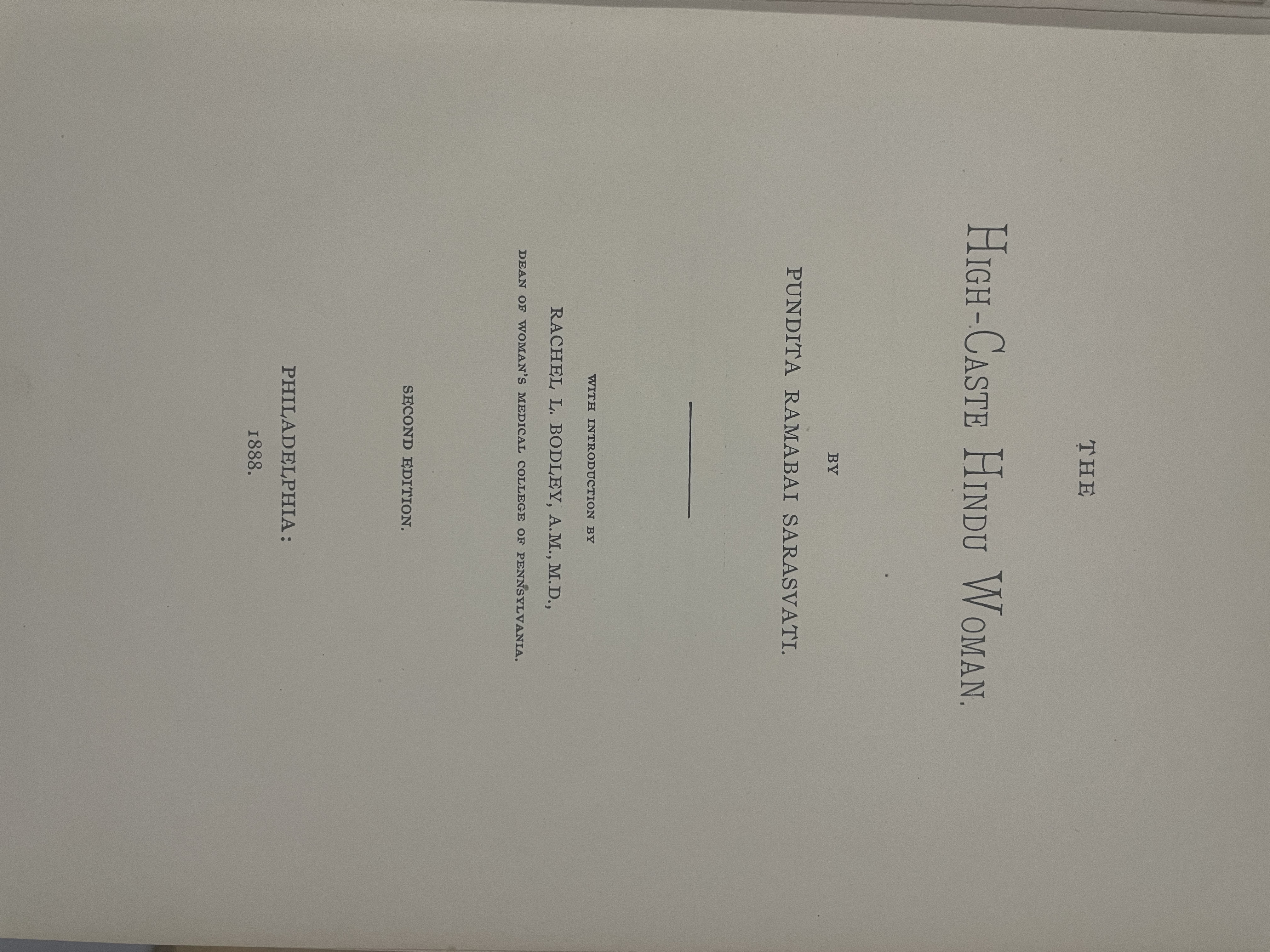The High Caste Hindu Women

About
Summary
Exquisite
TOC
Details
Related
URL
Images
Overview
The High Caste Hindu Woman by Pandita Sarasvati Ramabai, published in 1888, is a critical examination of the lives of upper-caste Hindu women in 19th-century India. The book sheds light on the social realities, oppression, and challenges faced by these women within the patriarchal structure of Hindu society.
Importance of Book
Pioneering Feminist Text: Ramabai's book is considered a pioneering work of feminist literature in India, articulating the concerns and aspirations of women in a patriarchal society.
Authentic Voice: The book provides an authentic voice to the experiences of high-caste Hindu women, offering insights into their daily lives, struggles, and hopes for the future.
Critical Analysis: Ramabai's critical analysis of Hindu scriptures and social customs provides a framework for understanding the roots of gender inequality in Indian society.
Call for Social Change: The book serves as a call for social change, urging readers to challenge oppressive norms and work towards a more just and equitable society for women.
Historical Significance: The High Caste Hindu Woman is a valuable historical document that sheds light on the social and cultural landscape of 19th-century India, particularly concerning the lives of women.
Key Themes
Oppression of Women: Ramabai highlights the various forms of oppression experienced by high-caste Hindu women, including child marriage, restrictions on education, and the plight of widows.
Patriarchal Norms: The book critiques the patriarchal norms and values that legitimized the oppression of women in Hindu society, particularly those based on ancient sacred scriptures.
Women's Dependence: Ramabai emphasizes the dependence of women on men throughout their lives (father, husband, and son), which she saw as a cycle of subjugation.
Importance of Education: Ramabai stresses the significance of education in empowering women and enabling them to lead respectable lives.
Widowhood: The book vividly describes the harsh realities and inhuman treatment faced by Hindu widows, especially those in high-caste families.
Cultural Significance
Social Critique: The book offers a scathing critique of the social conditions and customs that perpetuated the oppression of women in Hindu society.
Feminist Voice: Ramabai's work is considered one of the earliest expressions of feminist thought in India, challenging traditional norms and advocating for women's rights.
Historical Documentation: The book serves as a historical record of the lives of high-caste Hindu women in the 19th century, preserving their stories and experiences for future generations.
Raising Awareness: Ramabai's writing raised awareness among both Indian and Western audiences about the plight of women in India and the need for social reform.
Challenging Sacred Texts: Ramabai questioned and reinterpreted Hindu sacred texts, challenging their patriarchal interpretations and advocating for gender equality.
Effects on Society
Sparking Social Reform: The book contributed to the growing movement for social reform in India, particularly concerning women's rights and education.
Inspiring Activism: Ramabai's work inspired many women to become active in the struggle for gender equality and social justice.
Influencing Policy: The book influenced policy discussions and legislative changes related to women's education, marriage, and property rights.
Promoting Education: Ramabai established institutions such as the Arya Mahila Sabha and the Widow's Home to provide education and support to marginalized women.
Shaping Feminist Discourse: The book helped shape the discourse on feminism in India, influencing subsequent generations of feminist thinkers and activists.
Conclusion
The High Caste Hindu Woman by Pandita Sarasvati Ramabai is a seminal work that offers a critical examination of the lives of upper-caste Hindu women in 19th-century India. The book's themes of oppression, patriarchy, and the importance of education continue to resonate today. Ramabai's cultural significance lies in her feminist voice, historical documentation, and social critique. The book had a profound impact on Indian society, sparking social reform, inspiring activism, and shaping feminist discourse. The High Caste Hindu Woman remains an important and relevant text for understanding the history of gender inequality in India and the ongoing struggle for women's rights.
Title
The High Caste Hindu Women
Author
Pandita Sarasvati Ramabai
Name of Publisher
Philadelphia
Publish Date
1888
Subject
It provides insights into the lives and conditions of high-caste Hindu women in India during the late 19th century
Vintage
1801-1900
Number of Pages
119
Category
Social Sciences
Sub Category
India
Rarity
RARE
